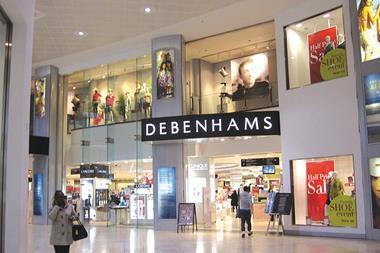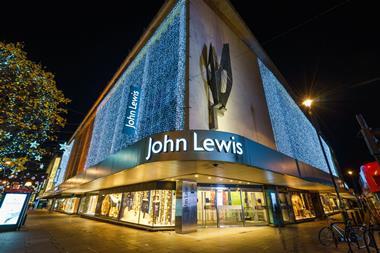Department store Debenhams chief executive Michael Sharp insisted today’s shock profit warning was due to a “one-off issue” caused by January’s snowfall, the impact of which will be felt across the high street. Retail Week speaks to Sharp.
RW: You put today’s profit warning down to the snow in January. Will all retailers be feeling the effects?
MS: Yes. I think the BDO high street sales tracker really tells the story.Footfall was down 8.4% in the week ending [January] 20 and it was down 6.4% in the week ending 27th. It was snowing across the country. The vast majority of retailers must have been affected.
For us, we were down 10% on like-for-likes which is very significant. What’s disappointing is that we traded strongly over Christmas and trading has recovered since. The problem we faced was the snow, there is nothing else to be concerned about. This does not affect our long term, sustainable growth. I can’t do anything about the snow, all I can do is react to it.
RW: Was discounting after the snowfall the right thing to do?
MS: If we didn’t take action now, there would have been deeper markdowns later on. There was nothing else to do but markdown.
We were left with excess stock as we were going into new season. Usually we would have 2.6% to 3% and because of our actions we came in at 3%.
RW: What kind of promotions did you launch?
MS: The snow affected us on weeks [January] 20, 21 and 22. We took advantage of the footfall around weeks 24, 25 and 26, and around Valentine’s Day and half term to launch strong promotions in-store.
RW: Were other retailers also discounting heavily around that period?
MS: There was evidence that Sale activities in January were carried out longer. I’m not interested in what other people were doing, we did what we had to do. We took decisive action for our terminal stock position.
RW: Rival John Lewis didn’t seem to suffer the same sales slowdown over the period. Why is that?
MS: They talked about trading being disrupted by snowfall on January 25. John Lewis has a slightly different business model. Around 12.5% of our sales come from the internet [compared to 25% at John Lewis], while around 80% come from stores, therefore widespread snow significantly disrupts us as you can’t physically get to store. With 150 stores across the country we are more affected as snow fell everywhere.
RW: How has market share fared over the period?
MS: The latest figures we have for the 24 weeks to January 20 which takes in the first few days of the snow disrupted period have been encouraging. We’re up 20bps in womenswear from 10 bps the last time [the figures were] produced. It makes it somewhat frustrating that we’ve been disrupted for two weeks as we traded strongly over Christmas.
RW: How has trading been following the snow?
MS: For the 26 weeks to March 2 like-for-likes were up 3%, while in the snow hit period they were down 10%. I think that shows the underlying strength in this business. This was a one off issue.


























No comments yet